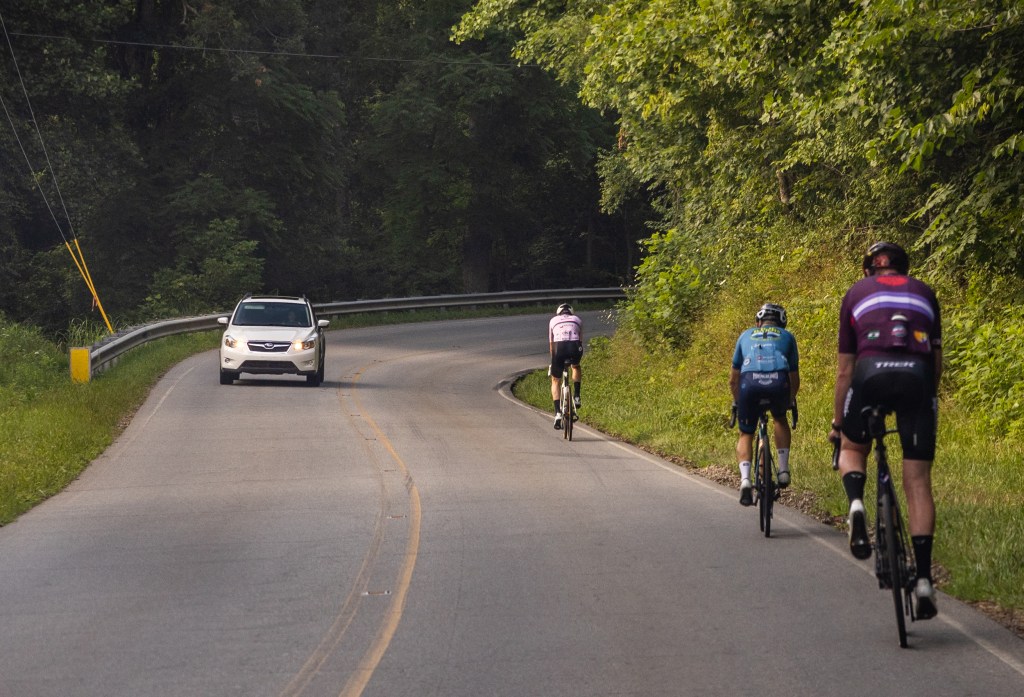Tragic Deaths Highlight Dangers in Asheville's Cycling Paradise

A Cycling Paradise and a Tragic Reality
Andrew Crater, a former professional cyclist, has always found inspiration in the natural beauty of Asheville. As he trained and raced across the globe, he eventually chose to settle in this mountainous region, drawn by its unique charm. He said it's no surprise that fellow cyclists Jake Hill and Lennie Antonelli also made Asheville their home.
“There might be equally beautiful places, but they’re not going to be any better than what we have here,” Crater, 47, who now serves as the director of Hill’s SupraBars team based in Greenville, South Carolina, explained.
The Blue Ridge Mountains, with their breathtaking landscapes and serene roads, have long been a magnet for cyclists. Crater described one of Hill’s favorite routes—a ride from the Folk Art Center to the summit of Mount Mitchell, which stands at 6,684 feet—as “one of the most stunning rides in the world.”
However, this idyllic setting was shattered on July 1 when Hill, 32, and Antonelli, 27, lost their lives in a tragic accident. The two were participating in their regular Tuesday-evening group ride when an oncoming dump truck veered into their path on NC 251, just north of the Buncombe-Madison County line.
This incident has brought attention to a growing concern in the area: the dangers that come with cycling in Asheville, despite its reputation as a top destination for road and mountain biking. Mike Sule, director of the Asheville on Bikes advocacy group, highlighted the irony of the situation.
“It’s one of the East’s premier destinations for road and mountain biking. It can also be a frightening and, too often, lethal place to ride,” Sule said.
Asheville was ranked as the most dangerous city in North Carolina for pedestrians in 2020. While the city is not as notoriously hazardous for cyclists, Sule emphasized that the underlying cause of both walking and cycling accidents is the same: the lack of viable transportation alternatives beyond motorized vehicles.
Despite efforts by city leaders to address these challenges, including overcoming community opposition and navigating difficult terrain, the progress has been slow. Several programs have been launched to develop multimodal transportation infrastructure, such as sidewalks, bike lanes, and greenways. However, Sule argues that these initiatives are not sufficient.
The current network of pedestrian and cycling infrastructure remains inconsistent and fragmented. This forces both walkers and cyclists to navigate busy streets and highways without adequate safety measures, such as shoulders or dedicated lanes.
The tragedy involving Hill and Antonelli underscores the urgent need for more comprehensive and accessible transportation options in the area. While Asheville continues to attract cyclists and outdoor enthusiasts, the reality of the region’s infrastructure poses a serious risk to those who choose to ride.
Efforts to improve safety and accessibility must continue, not only for the sake of cyclists but for all residents who rely on non-motorized transportation. The goal should be to create a safer environment where people can enjoy the natural beauty of the Blue Ridge Mountains without fear of danger.
As the community grapples with the loss of two young cyclists, there is a renewed call for action to ensure that future riders can safely explore the scenic routes that make Asheville a beloved destination for cyclists around the world.
Post a Comment for "Tragic Deaths Highlight Dangers in Asheville's Cycling Paradise"
Post a Comment